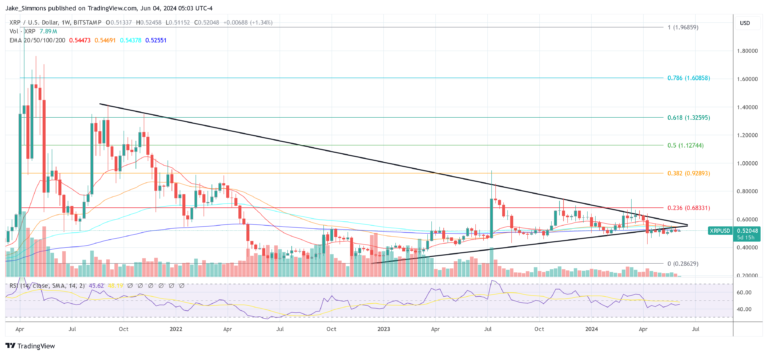In a recent interview With The Defiant, David Schwartz, Chief Technology Officer at Ripple, shed light on the security mechanisms of the XRP Ledger and the theoretical attack strategies it could face. Schwartz explained that unlike proof-of-work systems like Bitcoin, the XRP Ledger relies on a Byzantine Fault Tolerance (BFT) consensus mechanism called Ripple Protocol Consensus Algorithm (RCPΑ) for security.
How the XRP ledger could theoretically be attacked
Here’s how Schwartz describes it: “The only problem you can’t solve (with every node enforcing every rule) is the double-spending problem (…) the only way to attack the XRP Ledger was to stop the global order to work and it would simply bring the entire network to a halt.
This “global ordering” refers to validators agreeing on a specific sequence for transactions, preventing them from being spent twice. Disrupting this order would in fact be equivalent to shutting down the network. Schwartz acknowledges the possibility of an attack, but downplays its feasibility.
“In reality, the only plausible attack on the XRP Ledger is simply to shut it down,” he said. However, he believes that such an attack would be difficult to monetize and would quickly lose its effectiveness “as soon as someone causes the XRP Ledger to shut down, people would simply stop listening to them.”
Schwartz also recognizes a potential motive for a disruptive attack. “The only reason I imagine people would want to attack the system is if they ran out of XRP (…) you would imagine that the value of XRP could lose if the network shuts down.” However, he argues that knowledge of this potential attack would make borrowing XRP for short selling difficult to a risky degree.
Launching such an attack would require accumulating trust through proof of association within the network. Schwartz argues that validators chosen for their trustworthiness are unlikely to collude in an attack.
“When you choose participants with whom you are willing to work to reach consensus, your only criterion is that they do not agree to break the network (…) if you specifically choose people based on their unlikelihood of agree to break the network. break the network and yet they still collude to break the network, you’re like the worst possible choice.
Schwartz compares this attacker difficulty to proof-of-work systems: “Whoever has the most power can launch exactly the same type of attack (…) be forced to trust the party with the most money is somehow a better model. »
Schwartz downplays the practicality of the attack, emphasizing the difficulty and limited window of disruption. “In practice, this is an extremely difficult attack to launch and you will only be able to shut down the network once for a fairly short period of time,” he said. He compares it to double spend attack in Bitcoin, something users should be aware of but not worry too much about: “I would say it’s kind of in the same category. »
The interview ended with Schwartz mentioning the current size of the network. “I think last time I checked there were about 600 knots of which just over a hundred were actually participating in the validation process,” he said. This structure is similar to the distinction between full nodes and mining nodes in the Bitcoin network.
The design of the XRP Ledger prioritizes security through its consensus mechanism. Although a disruption attack is theoretically possible, Schwartz emphasizes the difficulty and limited impact of such an attempt. However, as with any system, security remains an ongoing topic of conversation and Ripple’s approach comes with its own considerations, such as reliance on trusted validators.
At press time, XRP was trading at $0.52.

Featured image from Shutterstock, chart from TradingView.com


